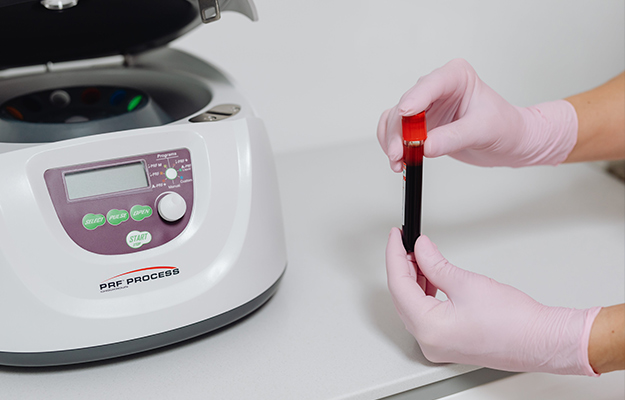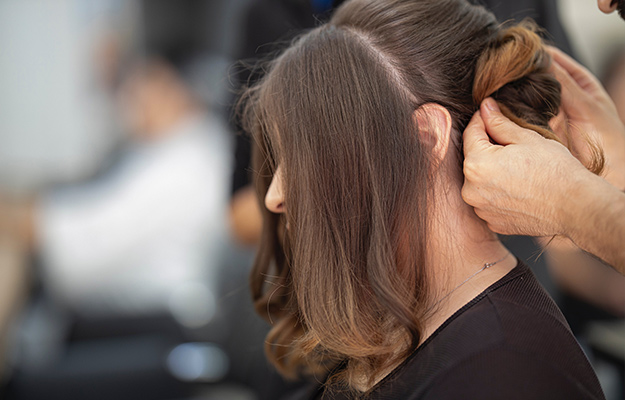Alongside medicine and transplantation, platelet-rich plasma (PRP) has become a strong contender for hair restoration in pursuing luscious locks.
A recent study published in Drug Design, Development, and Therapy has demonstrated the potential of PRP therapy as a crucial approach to dealing with hair loss.
Learn how PRP for hair loss is a viable option for anyone looking for a safe and efficient way to restore their hair to its former beauty.
Hair Loss Products Don’t Work? PRP for Hair Loss Shows Prospects
What is Platelet-rich Plasma (PRP)?
Platelet-rich plasma, or PRP, is the serum from your blood. Our blood is made up of different parts, and one of them is platelets.
Platelets, also called thrombocytes, are tiny cell fragments in our blood that help our bodies heal when we get a cut or bruise by forming clots and stopping or preventing bleeding.
PRP is a part of our blood where the platelets are purposefully concentrated to harness its potent regenerative properties.
How Does PRP Therapy Work?

Think of PRP as the maintenance crew for your body. Typically, when there’s an injury or a problem inside your body, these platelets rush to the scene.
PRP therapy works by harnessing this healing power and elevating it to a higher level. It’s like giving your body a boost to heal itself faster.
The procedure of PRP therapy takes place in two steps:
First, the doctor takes a small amount of your blood (approximately 10 to 60 mL). Then, using a centrifuge machine, they spin the blood super-fast. This centrifugal movement separates the platelets, making a potent PRP mixture. This mix contains growth factors acting as command signals telling your body to repair and regenerate.
Then, once the PRP is ready, the doctor injects it right where your body needs the help. It could be your knee, shoulder, or any place that needs a healing touch.
Because it’s your blood (scientists call whatever comes from your body “autologous”), there’s no need to worry about side effects causing trouble.
Following PRP administration, the enriched platelets release a cascade of growth factors, triggering cellular repair mechanisms. Specifically, this orchestrated response:
- Accelerates tissue regeneration
- Reduces inflammation
- Promotes healing
What Are the Applications of PRP Therapy?
The utility of PRP therapy extends across a spectrum of medical domains, including:
- Joint pains
- Tendon injuries
- Muscle injuries
- Hair loss
- Skin rejuvenation
- Dental procedures
- Surgery recovery
PRP for Hair Loss: Mechanism and Applications
Mechanism
Scientists suggest that PRP for hair loss operates through a multifaceted mechanism, capitalizing on the diverse functions of activated platelets.
These platelets, rich in growth factors and cytokines, including VEGF, IGF-1, and GDNF, carry out actions crucial for stimulating hair growth:
- GDNF protects hair follicles from premature catagen transition (a phase that marks the end of active hair growth) and promotes cell proliferation.
- VEGF induces angiogenesis, fostering a conducive environment for hair regrowth.
- IGF-1 extends the anagen phase (when hair grows outward and is actively generated) and stimulates skin cell proliferation.
PRP also exerts anti-apoptotic effects (apoptosis plays a crucial role in controlling the regression of hair follicles) and increases the survival of hair follicle cells.
Microscopic examination supports these findings, revealing PRP-treated scalp tissue with healthier follicular cells, more hair follicles, thicker skin, and more blood vessels.
Applications
Androgenetic Alopecia
Androgenetic alopecia (AGA), a common cause of hair loss, affects both men and women. PRP therapy shows promise in treating AGA by increasing hair density and thickness.
Studies reveal a significant rise in hair count after PRP injections compared to conventional treatments like finasteride and minoxidil. Approximately 84% of studies reported positive effects, with 50% demonstrating statistically significant improvements.
Female Pattern Hair Loss
Female pattern hair loss (FPHL) presents as thinning hair in women. PRP, shown to increase hair thickness and density, proves effective in FPHL treatment.
Meta-analyses confirm PRP’s positive therapeutic impact, with studies reporting increased hair count and diameter. Patients also report high satisfaction and improved quality of life.
Alopecia Areata
Alopecia areata (AA) causes hair loss due to an autoimmune response. PRP exhibits potent anti-inflammatory effects, stimulating hair regrowth in AA patients. Studies show PRP’s efficacy is comparable to conventional treatments like triamcinolone acetonide.
Patients treated with PRP for hair loss were found to experience increased hair regrowth and reduced severity of alopecia symptoms.
Cicatricial Alopecia
Cicatricial alopecia, resulting from inflammation, trauma, or infection, leads to scarring and hair loss. PRP successfully treats specific types, such as frontal fibrosing alopecia (FFA) and lichen planopilaris (LPP).
In cases unresponsive to conventional therapies, PRP shows improvements in itching, scaling, and hair shedding. Patients also report complete regression of symptoms, highlighting PRP’s potential in managing cicatricial alopecia.
Hair Transplantation
PRP not only treats hair loss of different types but also enhances the outcomes of hair transplantation procedures. Specifically, PRP therapy complements hair transplantation by enhancing graft survival and promoting faster regrowth after 4 months.
Studies also show increased follicular unit density and quicker growth when using PRP with hair transplantation (15% greater efficiency). It improves graft uptake, hair density, and thickness, making it a valuable adjunct to transplantation.
How Long Does It Take PRP to Work for Hair Loss?

PRP therapy isn’t an instant fix; it requires several sessions for visible hair regrowth.
Typically, 3 to 4 sessions, spaced 4 to 6 weeks apart, are recommended for optimal results. Maintenance treatments every 6 to 12 months may be necessary for ongoing regrowth.
Results vary based on factors like age, overall health, and the underlying cause of hair loss. Some may see changes after 3 sessions, while others may need more for noticeable results.
Combining PRP with other treatments may enhance outcomes. Your dermatologist will assess your progress and tailor the plan to your needs.
Are There Any Side Effects and Complications?
PRP therapy is generally safe, with most people experiencing mild, short-lived side effects.
Some may feel mild discomfort during injections. Post-injection, the scalp might feel sore, itchy, or tender, but these sensations usually subside within days.
Despite its safety profile, there are contraindications to consider.
- Absolute contraindications: critical thrombocytopenia, platelet dysfunction, hemodynamic instability, sepsis, local infection, and unwillingness to accept risk.
- Relative contraindications: recent NSAID use, glucocorticoid injections, systemic glucocorticoids, recent illness, cancer, anemia, thrombocytopenia, and tobacco use.
Though rare, these factors mean you must undergo a thorough medical evaluation before initiating PRP for hair loss.
Does PRP for Hair Loss Require Recovery Time?

PRP for hair loss doesn’t require extended recovery periods.
Most people can resume regular activities post-injection. While mild discomfort or tenderness may occur, these sensations lessen within days.
Dermatologists may provide specific aftercare instructions, possibly temporarily advising against certain activities or hair products. The flexibility and minimal downtime associated with PRP make it a convenient option for those with busy lifestyles.
How Much Does PRP Cost for Hair Loss?
The cost of PRP for hair loss can vary, with an average price of $700 per session. Factors influencing costs include the provider, location, and the number of sessions needed.
Before starting PRP therapy, discuss the total treatment cost with your provider. Inquire about potential financing options or payment plans they may offer.
Is PRP for Hair Loss Covered by Insurance?
PRP for hair loss is typically considered an elective cosmetic procedure and is not covered by insurance. Some private insurance companies may cover PRP for specific medical conditions like alopecia areata.
Check with your insurance provider to determine coverage specifics for PRP sessions.
Without insurance coverage, you’ll be responsible for the out-of-pocket costs associated with PRP therapy. Understanding insurance implications helps you make informed decisions.
Bottom Line
PRP for hair loss offers promising benefits, fostering hair regrowth and enhancing thickness. However, it’s not a one-size-fits-all solution. One limitation is the lack of standardization in PRP preparation. Varying methods, from collection tubes to centrifugation duration, make choosing the right approach crucial.
Both healthcare practitioners and patients should weigh these factors to find the most suitable PRP method for optimal results.
And, remember, consistency and patience are crucial. PRP is a process, not a one-time solution, so stick with it for the best results in your hair regrowth journey.
References
Paichitrojjana A. et al. (2022). Platelet Rich Plasma and Its Use in Hair Regrowth: A Review. Drug Design, Development, and Therapy
UP NEXT:

